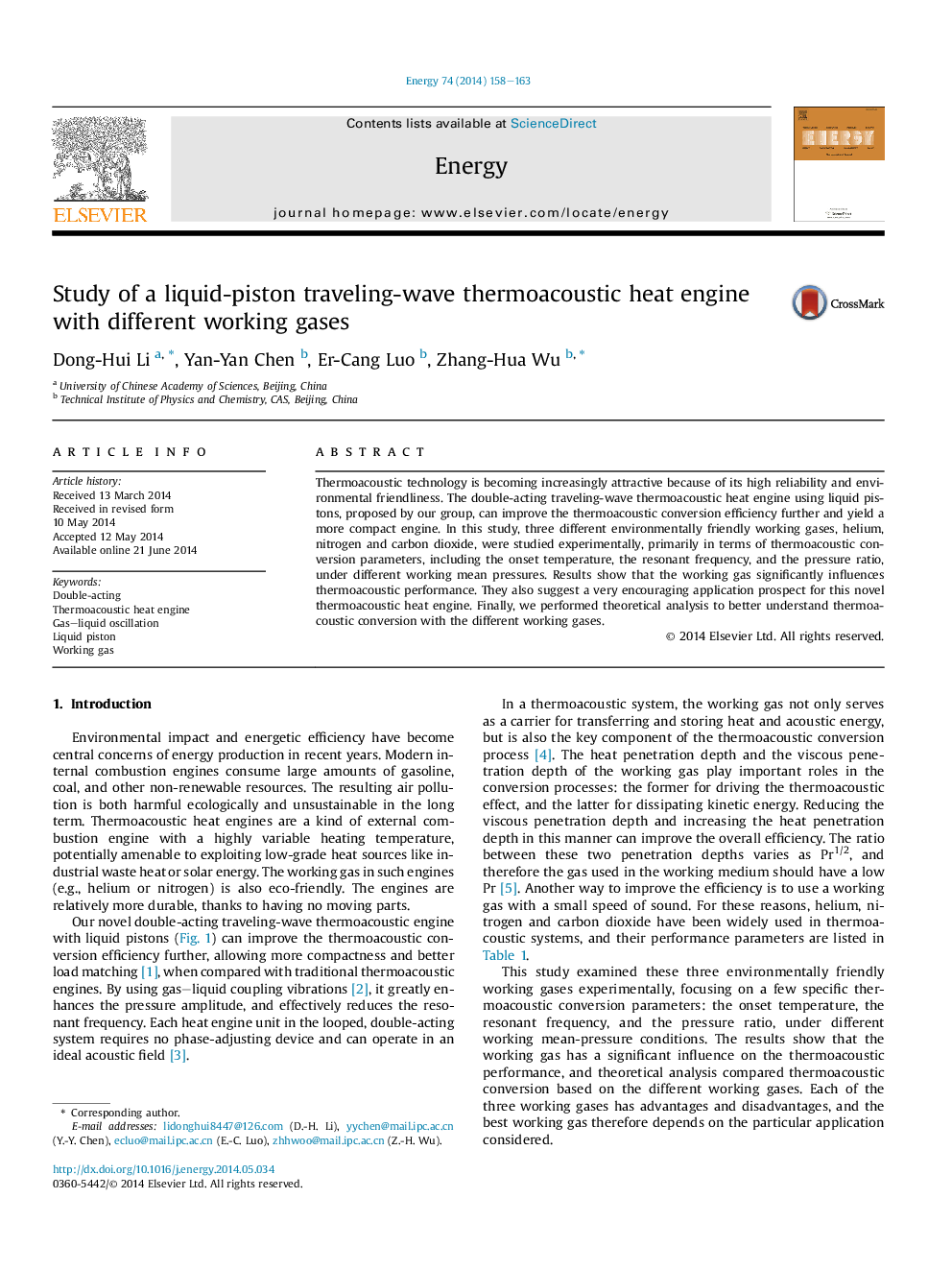| Article ID | Journal | Published Year | Pages | File Type |
|---|---|---|---|---|
| 1732448 | Energy | 2014 | 6 Pages |
•Performance of the novel system is much better than the traditional one.•Heating temperature and pressure ratio improve as the heating power increases.•Heating temperature and pressure ratio decrease as the mean pressure increases.•Onset temperature and resonant frequency of carbon dioxide are the lowest.•For given heating power the oscillating pressure amplitude of helium is the largest.
Thermoacoustic technology is becoming increasingly attractive because of its high reliability and environmental friendliness. The double-acting traveling-wave thermoacoustic heat engine using liquid pistons, proposed by our group, can improve the thermoacoustic conversion efficiency further and yield a more compact engine. In this study, three different environmentally friendly working gases, helium, nitrogen and carbon dioxide, were studied experimentally, primarily in terms of thermoacoustic conversion parameters, including the onset temperature, the resonant frequency, and the pressure ratio, under different working mean pressures. Results show that the working gas significantly influences thermoacoustic performance. They also suggest a very encouraging application prospect for this novel thermoacoustic heat engine. Finally, we performed theoretical analysis to better understand thermoacoustic conversion with the different working gases.
